The Synthetic Unity of Superman III
Superman Movies Are Bad Movies part 4: Superman III and Superman IV: The Quest for Peace
Superman III
Directed by Richard Lester. Produced by Alexander Salkind, Ilya Salkind, Robert Simmonds, Pierre Spengler. Written by David Newman and Leslie Newman.
U.S. Release: June 17th, 1983.
Starring: Christopher Reeve as Superman; Richard Pryor as Gus Gorman; Annette O’Toole as Lana Lang; Robert Vaughn as Webster; Annie Ross as Vera; Pamela Stephenson as Lorelei; and featuring, for all of five minutes, Margot Kidder as Lois Lane
Plot: Clark Kent returns to Smallville to attend his high school reunion and reconnect with Lana Lang. Despite the fact that Clark didn’t wear glasses in high school, and the amazing coincidence that Superman rescues several people in Smallville during reunion weekend, no one puts two and two together. Lex Luthor replacement Webster hires Gus to make synthetic Kryptonite that destroys Superman’s moral center. He drinks, destroys an oil tanker, blows out the Olympic torch, “fixes” the Leaning Tower of Pisa, and allows himself to be seduced. In the movie’s best sequence, Evil Superman and Good Clark Kent fight a symbolic battle in a junkyard.1 Clark wins. The villains build a supercomputer to kill Superman, but it turns one of them into a cyborg instead. Superman destroys the computer and saves the day.
Kryptonian Powers: flight, strength, invulnerability, molecular density, super-speed, X-Ray vision, super-hearing, heat vision, super peanut flicking.
Bullshit Science: Reprogramming a satellite makes new weather. A supercomputer becomes self-aware.
Nightmare Inducing Death Scenes: Clark is crushed in a junkyard car compactor (see note 1); Vera Webster is pulled into the computer and turned into a cyborg.
Best Superman Save: Superman rips the top off a car filling with water, saving a man from drowning.
Runner Up: Superman uses his super-cold breath to freeze the top of a lake, carries the ice sheet to a burning chemical plant, and drops it on the fire. Why didn’t he just blow on the fire in the first place?
Clark Kent to Superman Transformation: Photobooth (see image below)
Continuity: Clark nearly tells Lana about Lois. Lois seems almost upset that Clark has found someone new to love… almost. Superman drinks Johnnie Walker Red Label. Lana moves to Metropolis to work with Clark at The Daily Planet and but we never see her again.
Oddities: There are two instances of American flags displayed backwards. At the end of the movie, while bragging that he knows Superman personally, Gus pulls open his shirt, mimicking the classic Clark Kent S-logo reveal—but how would he know about this? He shouldn’t even be aware of Clark Kent! This movie is dumb.
Superman’s Last Word: “I have a couple of errands to run before lunch.”
Lois Lane’s one-line review of the movie: “The picture’s fine… it looks like that in real life.”
Superman IV: The Quest for Peace
Directed by Sidney Furie. Produced by Graham Easton, Yoram Globus, Menahem Golan, Michael J. Kagan. Written by Christopher Reeve
U.S. Release: July 23rd, 1987.
Starring: Christopher Reeve as Superman; Margot Kidder as Lois Lane, Gene Hackman as Lex Luthor, Mariel Hemmingway as Lacy Warfield, Mark Pillow as Nuclear Man.
Plot: Superman attempts to rid the world of nuclear weapons. Lex Luthor creates a Nuclear Man to destroy Superman. A sleazy media mogul buys The Daily Planet with intent to turn it into a tabloid and boost sales. His daughter tries to seduce Clark Kent. All these carefully laid plans fail miserably, pathetically, along with the movie itself.
Kryptonian Powers: flight, strength, invulnerability, molecular density, super-speed, super-hearing, super-breath, X-Ray vision, heat vision, Great-Wall-of-China-Rebuilding Vision
Bullshit Science: Cloning. Plugging up the top of a volcano mountain stops the eruption. Lacy Warfield can breathe in space. Superman flies from Earth to the Moon in a few seconds.
Nightmare Inducing Death Scenes: None. No casualties in this movie.
Best Superman Save: Superman stops a runaway subway train by stepping onto the third rail and absorbing all the electricity.
Clark Kent to Superman Transformation: None. There are some Mrs. Doubtfire-style hijinks when Lois and Lacy try to have a double date with Superman and Clark, but nothing interesting or funny.
Continuity: Clark returns to the Kent family farm (which he apparently didn’t do in SIII?). A strand of Superman’s hair can suspend a 1000-lb weight but can be severed with ordinary bolt-cutters. Superman speaks Russian and Italian. Lois, still under the spell of the Super-Kiss from two movies ago, subconsciously knows that Clark is Superman. This poor woman must be in some kind of psychic hell like the sunken place from Get Out.
Oddities: Another backwards American flag!
Superman’s Last Word: “The world is at it always was: on the brink, with good fighting evil.”
Lois Lane’s one-line review of the movie: “What I am doing out here?”
I am five years old, on the floor in a dimly lit living room. This is Buffalo, summer, 1985. A dog the size, shape, and color of a polar bear pants in the corner. Uncle Carl drinks Genesee from the can and chats with my grandparents, my father, my aunt. I don’t know Uncle Carl, but my father and aunt refer to him with a casual familiarity that makes me think I’ve missed a formal introduction. Maybe the room’s walls are brown panel, or maybe coated with years of cigarette smoke. I press my face up against the TV set, like Carol Anne in Poltergeist. Superman is about to rip the top off a car to save a man from drowning, but first Clark Kent must change clothes.
I can’t remember the name of the dog. Fluffy? Buffy? Muffy? I am certain it will eat me.
The Clark-to-Superman transformation is wonderful opportunity for different filmmakers to invent new and interesting visual morsels for each film. It is like the Simpsons couch gag, or dinosaur attacks in Jurassic Park movies, or car stunts in the Fast and Furious franchise or Jason’s kills in Friday the 13ths. Each new instance can build on audience expectation, raise the stakes, crank up the tension or the humor. In Superman III’s opening sequence, Clark dips into a photobooth to change. He emerges as Superman and glances at the photostrip: Clark with glasses, glasses off, shirt open, Superman. He tears the last photo and hands it to child before racing off to the rescue.
Five-year-old me has no idea what’s happening. Five-year-old me has never been in a photobooth before, has never seen or heard of one. I recall trying to make sense of what I was seeing, wondering if perhaps the photobooth had somehow caused Clark to become Superman.
There’s a scene near the middle of SIII when Lorelei, a blonde beauty who looks, speaks, and acts like arm candy—the villain’s trophy girlfriend—reveals herself to be an intellectual merely feigning vapidity. We see her on a sofa, talking to herself while reading a book called Critique of Pure Reason, by German philosopher Immanuel Kant: “how can he say that pure categories have no objective meaning in transcendental logic? What about synthetic unity?” We—the movie audience—are not supposed to know what that means. We’re only supposed to realize that Lorelei is not the bimbo she pretends to be. This reveal feels like foreshadowing, like a kind of Chekov’s gun. It feels like a setup that, in a good movie, will be paid off in the film’s climax; just when things seem hopeless, Lorelei will surprise everyone and save the day with unexpected brainy skills. SIII offers no such payoff.
It’s been a long time since I’ve taken a philosophy class. I think what Kant means is that the mind is a system of basic frames that are impossible to make sense of without sensory input—something has to happen in order for the mind to create meaning. For example, empty shelves in a bookstore aren’t much fun, but once we start adding titles, then we can create sections. Meanwhile, Kant says that the mind combines lots of different bits of sensory input into one concept of “something” that exists, and he calls this process “synthetic unity.” Books + sections + customers + sales + time = the synthetic unity we call “bookstore.”
If only there’d been a philosophy student in that Buffalo living room, who could’ve explained that I lacked the necessary sensory input to create synthetic unity.
Who is Uncle Carl? I think he is my grandmother’s sister’s husband. Everyone has an Uncle Carl—a notorious relative, an infamous relative, one the whole family knows, has known longer than they can remember, can’t quite recall where he came from. He was bald, whisps of white hair on the sides of his head, extremely loud voice—perhaps partially deaf from a Korean War injury? Maybe missing a few teeth? In my mind he looks a little bit like Frank Pentangeli from The Godfather Part II.
The first two Christopher Reeve Superman movies, both written by Mario Puzo, are simplified PG versions of The Godfather. Kal-El is Michael Corleone, Lois Lane is Kay, General Zod is Sollozzo, Lex Luthor is Barzini, Marlon Brando is Marlon Brando. Kal-El wants to live a normal life with Lois, but he is compelled by the legacy of his father, ultimately killing his enemies and pushing his love aside. And just like The Godfather saga, STM and SII taken together are an archetypal hero’s journey about finding a balance between heritage, responsibility, and desire. By the time we get to SIII and TQ4P, however, the previous character arc is complete, so our hero needs new challenges. He becomes an authoritarian moralizing super-parent; computers are bad—too much screen time; you can’t have those nuclear rocket toys—you’ll shoot your eye out! And the movies fail.
(I owned the junior novelization of TQ4P. Novelizations are written based on the shooting script, not the final film, and I remember being confused as to why there were so many scenes in the book that weren’t in the movie I saw with my aunt when it was new in theaters. Of course I didn’t know at the time that the film suffered from severe budget cuts, but even with sufficient sensory input I doubt I’d’ve been able to find synthetic unity in TQ4P.)
“The less said about Superman IV the better.” Christopher Reeve.
Comic book characters don’t need to grow. We can draw them into adventure after adventure for decades, and so we do. Film and television characters, meanwhile, are played by actors, and actors age. If we’re going to continue making new episodes with the same actors, then the characters need to evolve and change to reflect the aging of the actors. The Godfather Part III, set 30-odd years after Part II, at least acknowledges the passing of time. The Reeve Superman series pretends that its characters don’t age. Even in the context of a high school reunion in SIII, where Clark pitches a story2 about being away from home for fifteen years, there are no scenes showing us what he might miss from childhood; no scenes where he visits with people who knew his long-dead parents—doesn’t Clark have a weird Uncle Carl? In TQ4P, both Reeve and Margot Kidder have aged considerably since the first movie, but Clark and Lois are stuck in their prescribed roles, unable to grow, because that’s what happens in the comic books.
These movies aren’t merely stupid; they think we are stupid, and no one likes to be made to feel stupid.
It’s not easy to write about bad movies you don’t like very much, even when they leave a lasting impression. When I started remembering Uncle Carl—whose full name is Carlo Carbone, not far off from Vito Corleone—I thought, well, he was elderly when I was five, so he’s probably… But no! Turns out he might still live in that same house, at 90 years old. Which means he was 50 when I was five, when his bear dog nearly ate me. Which means he was 3 years old when the first Superman comic hit newsstands in 1938. Heck, he might’ve learned to read with Superman.
When he was that boy, hiding under the covers with a flashlight to read his comics late at night, did anyone ever call his name with a full Italian accent, rolled Rs and AY sound at the end? Carlo Carbone.
Is he anyone’s godfather?
One of the best scenes in any Superman movie. Plenty of other writers have written about it extensively. You should just watch it:





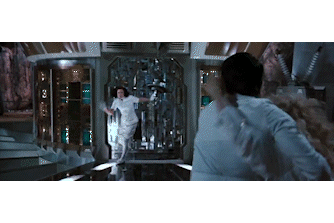


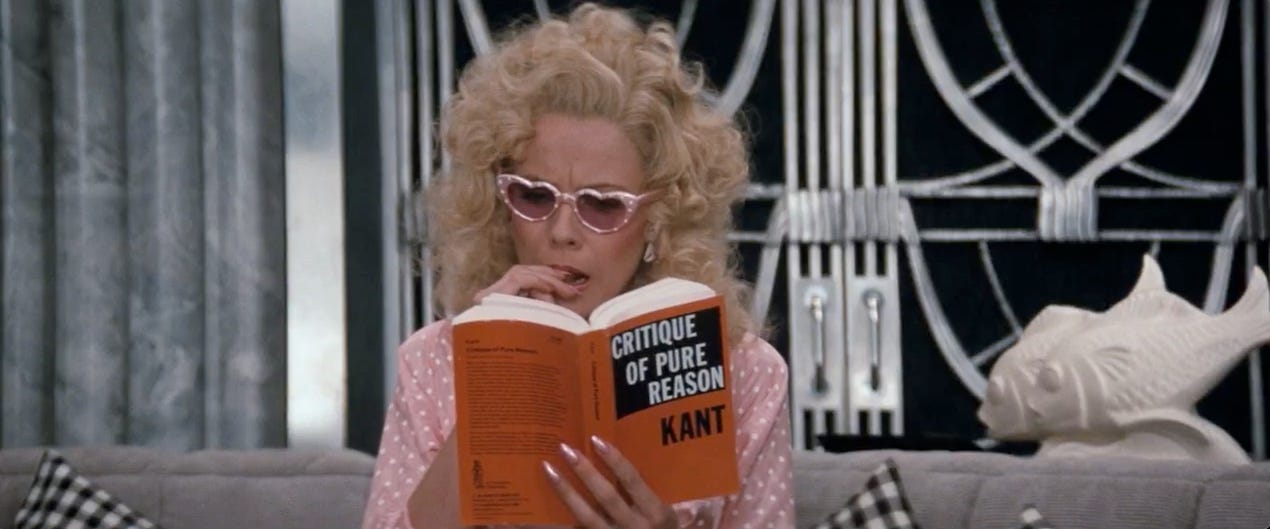
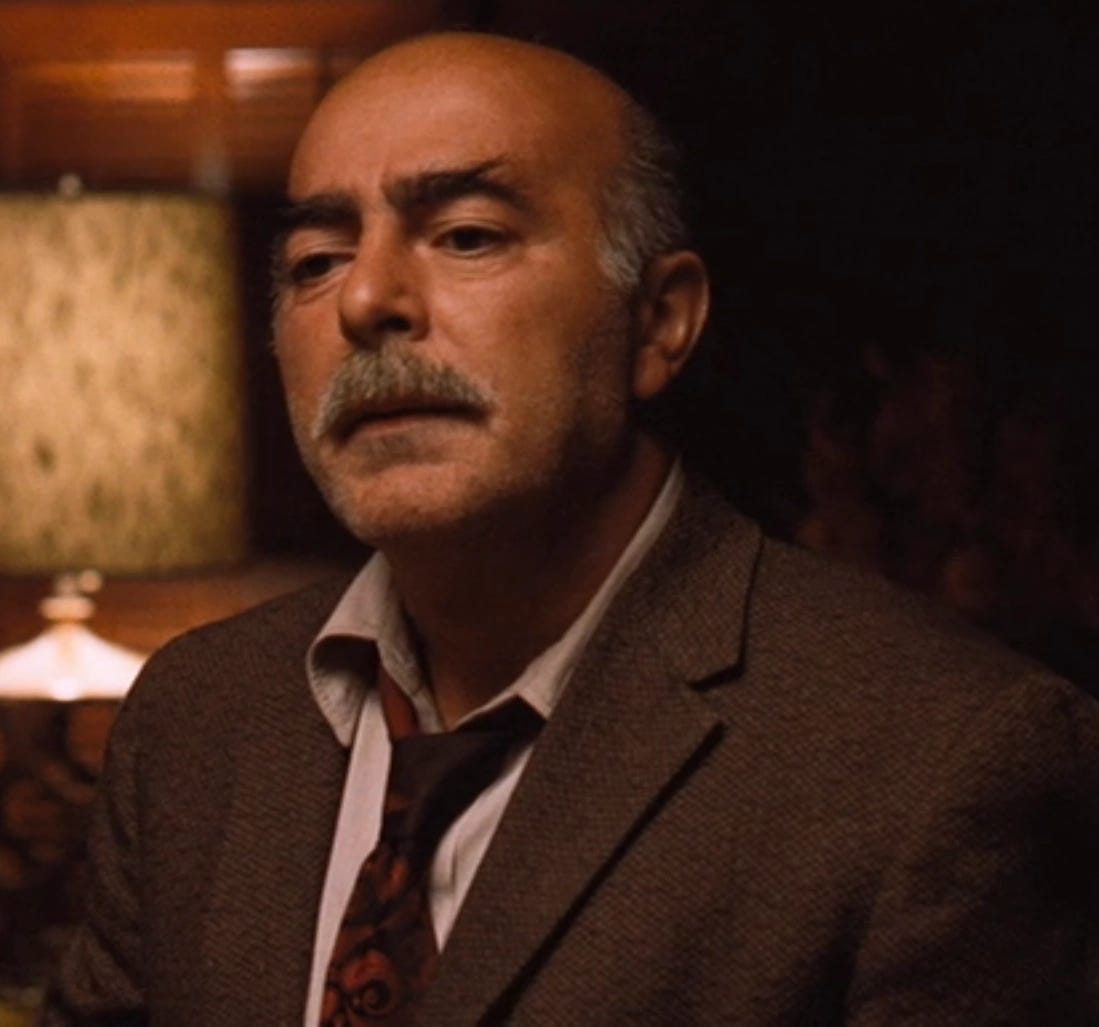
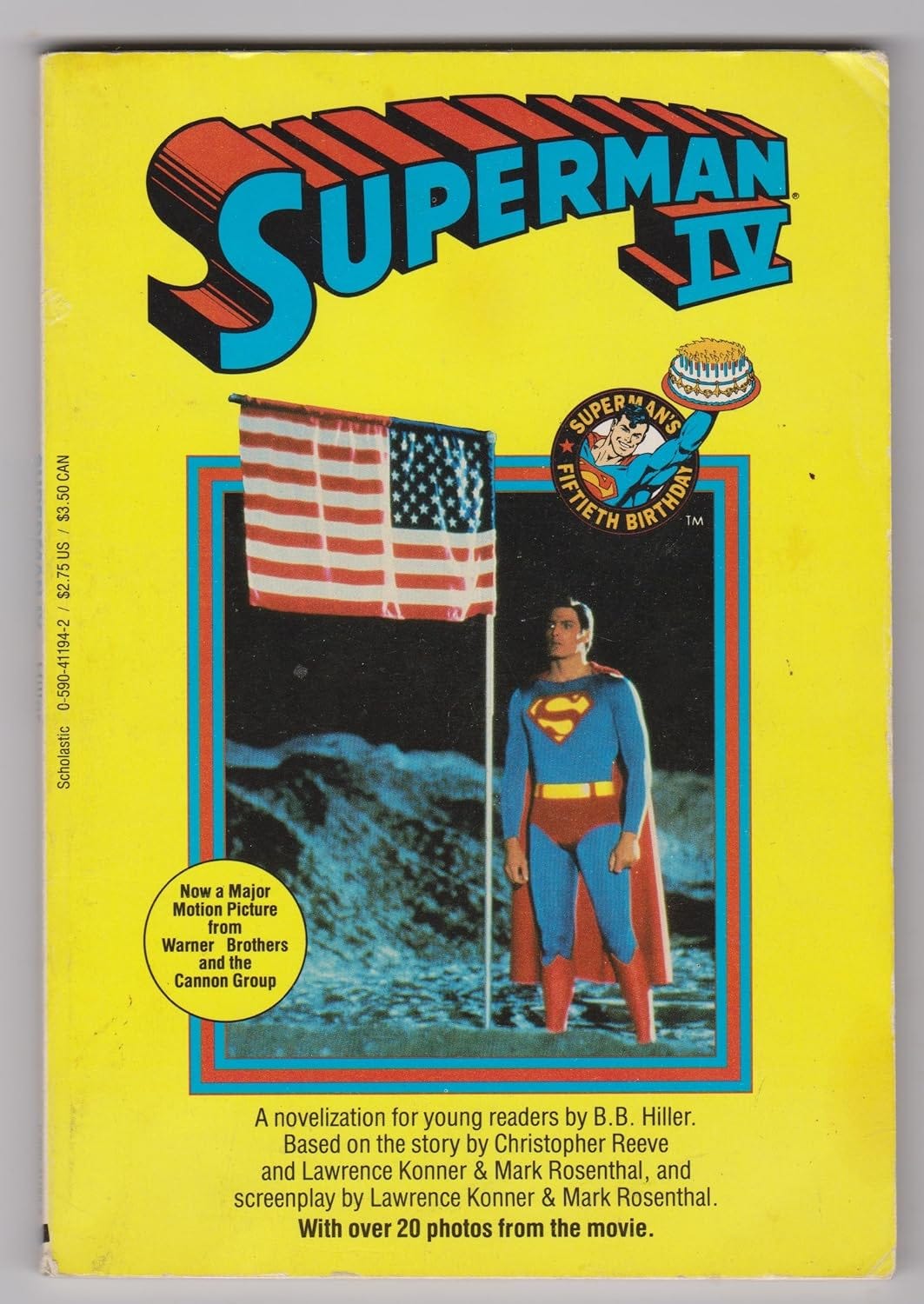
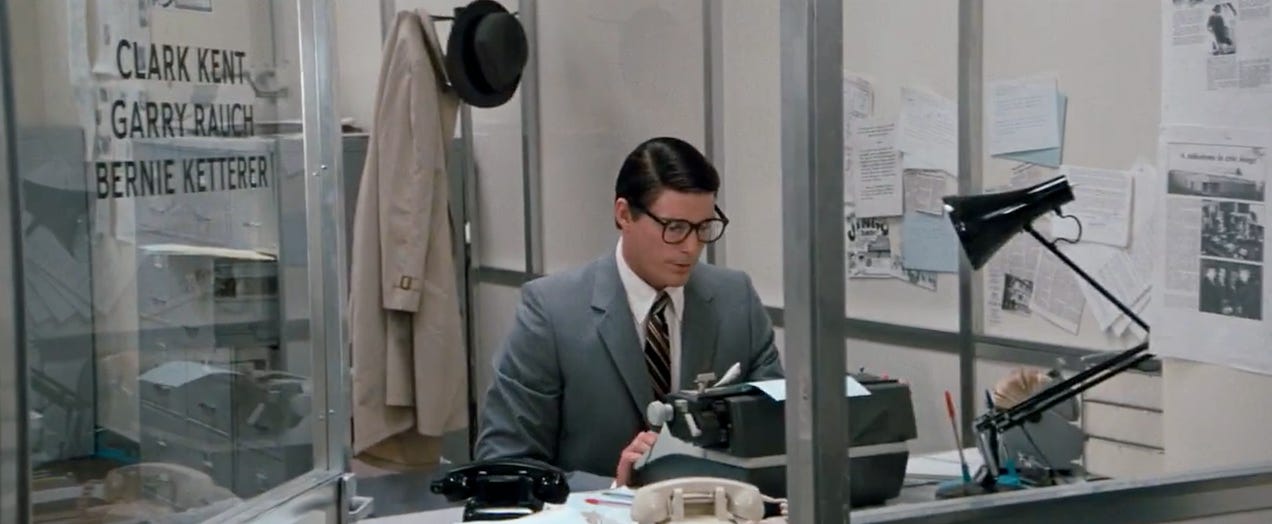
“Plugging up the top of a volcano mountain stops the eruption.“ 🤣
Sounds like Muffy-Bluffy-Fluffy was a Great Pyrenees.